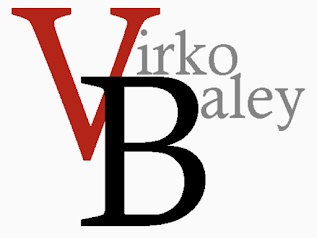Introduction
Virko Baley's growing stature as a composer on the international concert stage is shining the spotlight not just on his singular artistic voice - a colorful convergence of diverse influences both musical and cultural - but on its own development.
That voice stems in part from what Baley calls "full acceptance, then rejection of, different musical styles." His early works, filled with an unsettling expressionism, sit alongside later works embracing frankly folkloric materials. In examining his output, solo and chamber music, opera and orchestral pieces - one may notice the stylistic differences first, but those pieces are all part of the same artistic vision, as it is essentially a lyrical one. Baley's touch reveals itself not only in the way an idea from an earlier work occasionally resurfaces in a new instrumentation of style, but also in a larger sense, in his pervading concern with merging the American and Ukrainian Modernist traditions into a coherent personal statement. Much of Baley's development as a mature artist has been shaped by his life as a performing musician, both as a pianist and conductor (he served as Professor of Music at the University of Nevada and, until 1995, served as founding Music Director of the Nevada Symphony). Grants and commissions have come from various prestigious organizations:
- The National Endowment for the Arts
- The Project 1000-Winnepeg Symphony
- The California E.A.R Unit
- Continuum
- The New Julliard Ensemble
- The Cleveland Chamber Symphony
- Nevada Symphony Orchestra
- The Nevada State Council on the Arts.
In Las Vegas an environment known more for high stakes than high culture, Baley has been able to let his compositional voice grow freely, unencumbered by the political entanglements of musical life on either coast.
Much of Baley's personal voice is inextricably linked to his childhood amid the turmoil in mid-century Europe. Born in Radekhiv, Ukraine in 1938, the young Baley and his entire family, except his father who was sent to Auschwitz, were shipped to Slovakia following the German invasion. Near the end of the war, the family was reunited and ordered to work on a farm in Germany. After the way, they relocated to Munich.
It was during the family's slow "return to normalcy" that Baley began his early music studies with Roman Sawycky, a follow Ukrainian of considerable reputation whom Baley recalls fondly today. But childhood sickness and a transient home life kept him from progressing rapidly; all schooling ceased for six months during a particularly bad bout of illness, and the Baley's did not own a piano in the displaced persons camp in Regensburg where they moved in 1947.
Two years later, in 1949, the family emigrated to the United States. Settling in Los Angeles, the young Virko, now with his first piano, began studying in 1950 with a retired conductor who introduced him to the world of opera. In 1952, he commenced studies with Earle C. Voorhies, head of the piano faculty at the Los Angeles Conservatory of Music and Arts. From there, Baley progressed rapidly. Devoting a semester after high school to practice, he entered the Conservatory where he received both his bachelor's (magna cum laude) and master's degrees majoring in piano and composition.
Although Baley had been composing throughout his teens (as well as writing stories and attempting a play) he only began to compose seriously by the age of 20. The few pieces that remain from those years - the mostly Neo-romantic Two Songs in Olden Style for soprano and piano (1960), two Dumas for piano (1959), and the expressionistic Nocturnal No. 1 (1958) - show that the pull between normality and atonality was already in place. Also in place was his ability to sketch ideas that would bear further development in future works. The second of the two songs later became the basis of the second movement code in his Piano Concerto No. 1 (1990-93).




